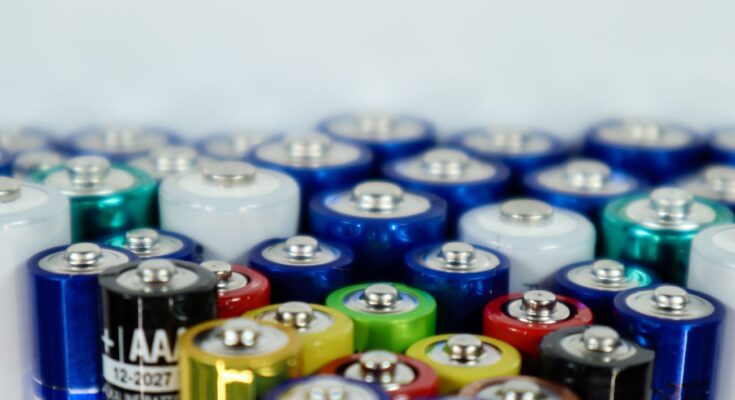Have you ever wondered what really happens inside those little powerhouses we call alkaline batteries? From remote controls to flashlights, these ubiquitous energy sources are a staple in our everyday lives. Yet, for many of us, their inner workings remain a mystery.
Imagine being able to unlock the secrets of alkaline batteries, understanding not just how they work, but why they’re so widely used. This knowledge isn’t just for tech enthusiasts or science buffs—it’s practical information that can help you make smarter choices about the batteries you use and how you handle them. Ready to embark on a journey into the heart of alkaline technology? Let’s dive into the fascinating world of chemical reactions, explore the advantages that make alkaline batteries stand out, and discover their common applications. We’ll even uncover the proper ways to handle and dispose of these power-packed cylinders, ensuring you’re not just informed, but also environmentally responsible.
Basic Components of Alkaline Batteries
A. Anode: The negative electrode
The anode serves as the negative electrode in an alkaline battery. It’s typically made of zinc powder, which is highly reactive and provides the electrons necessary for the battery’s operation. The zinc anode undergoes oxidation during discharge, releasing electrons into the circuit.
B. Cathode: The positive electrode
The cathode acts as the positive electrode and is usually composed of manganese dioxide (MnO2). This material readily accepts electrons during the battery’s discharge process, facilitating the flow of current. The cathode’s design maximizes surface area for efficient electron transfer.
C. Electrolyte: The conductive medium
The electrolyte in alkaline batteries is a potassium hydroxide (KOH) solution. This alkaline substance enables ion movement between the anode and cathode, completing the electrical circuit. The concentration of KOH affects the battery’s performance and shelf life.
D. Separator: Keeping electrodes apart
A porous separator, often made of non-woven fabric or paper, physically isolates the anode from the cathode. This crucial component prevents short circuits while allowing ions to pass through. The separator’s design balances electrical resistance and ion permeability.
| Component | Material | Function |
|---|---|---|
| Anode | Zinc powder | Provides electrons |
| Cathode | Manganese dioxide | Accepts electrons |
| Electrolyte | Potassium hydroxide | Enables ion movement |
| Separator | Non-woven fabric/paper | Prevents short circuits |
Key features of alkaline battery components:
- Zinc anode: High energy density
- Manganese dioxide cathode: Stable and cost-effective
- Alkaline electrolyte: Enhances conductivity
- Separator: Ensures safety and prolongs battery life
Now that we’ve covered the basic components, let’s explore the chemical reactions that power alkaline batteries.
Chemical Reactions Powering Alkaline Batteries
Oxidation at the anode
The chemical reactions that power alkaline batteries begin at the anode, where oxidation occurs. In alkaline batteries, the anode is typically made of zinc. When the battery is in use, the zinc atoms undergo oxidation, losing electrons in the process. This reaction can be represented as:
Zn → Zn²⁺ + 2e⁻
As the zinc oxidizes, it gradually dissolves into the electrolyte solution, releasing electrons that flow through the external circuit to power devices.
Reduction at the cathode
At the cathode, typically made of manganese dioxide (MnO₂), a reduction reaction takes place. The electrons produced at the anode travel through the external circuit and are accepted by the cathode material. This reduction process can be represented as:
2MnO₂ + H₂O + 2e⁻ → Mn₂O₃ + 2OH⁻
Ion flow through the electrolyte
The electrolyte in alkaline batteries is usually potassium hydroxide (KOH), which facilitates the movement of ions between the anode and cathode. As the battery discharges, hydroxide ions (OH⁻) move from the cathode to the anode, completing the electrical circuit.
| Component | Role in Chemical Reaction |
|---|---|
| Anode (Zn) | Oxidizes, releases electrons |
| Cathode (MnO₂) | Accepts electrons, reduces |
| Electrolyte (KOH) | Facilitates ion movement |
These chemical reactions work together to create a continuous flow of electrons, providing electrical energy to power various devices. As the battery discharges, the zinc anode gradually depletes, and the manganese dioxide cathode becomes reduced, ultimately leading to the battery’s end of life.
Advantages of Alkaline Batteries
A. Longer shelf life
Alkaline batteries are renowned for their impressive shelf life, typically lasting up to 10 years when stored properly. This longevity is due to their low self-discharge rate, which means they retain their charge even when not in use. Here’s a comparison of shelf life for different battery types:
| Battery Type | Shelf Life |
|---|---|
| Alkaline | 5-10 years |
| Lithium | 10-15 years |
| NiMH | 3-5 years |
| NiCd | 1-2 years |
B. Higher energy density
Alkaline batteries pack more power into a smaller package compared to many other battery types. This higher energy density translates to:
- Longer-lasting power for devices
- Fewer battery changes required
- More efficient use of space in portable devices
C. Better performance in high-drain devices
One of the standout features of alkaline batteries is their ability to maintain voltage levels under heavy loads. This makes them ideal for:
- Digital cameras
- Portable gaming devices
- Remote-controlled toys
D. Lower environmental impact
While not perfect, alkaline batteries have some environmental advantages:
- They contain no toxic metals like mercury or cadmium
- Many components are recyclable
- Some brands offer recycling programs
E. Cost-effectiveness
Despite initial costs, alkaline batteries often prove more economical in the long run:
- Lower price per unit of energy compared to some rechargeable options
- No need for special chargers
- Ideal for low-drain devices where longevity is key
Now that we’ve explored the advantages of alkaline batteries, let’s look at some common applications where these benefits really shine.
Common Uses of Alkaline Batteries
Household electronics
Alkaline batteries are ubiquitous in household electronics due to their reliability and long shelf life. Here’s a list of common household items that typically use alkaline batteries:
- Remote controls (TV, AC, etc.)
- Wall clocks
- Smoke detectors
- Toys and game controllers
- Flashlights
These devices benefit from the steady voltage output and long-lasting power of alkaline batteries, ensuring consistent performance over extended periods.
Portable devices
Many portable devices rely on alkaline batteries for their convenience and wide availability. Here’s a comparison of popular portable devices and their typical battery requirements:
| Device | Battery Type | Average Battery Life |
|---|---|---|
| Digital cameras | AA or AAA | 200-300 photos |
| Portable radios | AA or C | 20-30 hours |
| GPS devices | AA | 15-20 hours |
| Handheld games | AA or AAA | 10-15 hours |
Emergency equipment
In emergency situations, reliable power sources are crucial. Alkaline batteries are ideal for emergency equipment due to their long shelf life and consistent performance. Some essential emergency items powered by alkaline batteries include:
- Emergency radios
- Headlamps and lanterns
- Portable weather radios
- Battery-powered fans
These devices play a vital role in keeping people informed and comfortable during power outages or natural disasters. The dependability of alkaline batteries makes them a go-to choice for emergency preparedness kits.
Next, we’ll explore the proper handling and disposal of alkaline batteries to ensure safety and environmental responsibility.
Proper Handling and Disposal
Safe storage tips
Proper storage is crucial for maintaining the longevity and safety of alkaline batteries. Here are some essential tips:
- Store in a cool, dry place away from direct sunlight
- Keep batteries in their original packaging or a plastic container
- Avoid mixing old and new batteries
- Remove batteries from devices when not in use for extended periods
Recognizing when to replace
Knowing when to replace alkaline batteries ensures optimal device performance and prevents potential damage. Look out for these signs:
- Decreased device performance or shorter operating time
- Physical changes like swelling or leakage
- Corrosion on battery terminals
Recycling options
Recycling alkaline batteries is environmentally responsible and helps recover valuable materials. Consider these options:
- Local recycling centers
- Retail store collection programs
- Mail-in recycling services
| Recycling Method | Pros | Cons |
|---|---|---|
| Local centers | Convenient, often free | Limited availability |
| Retail stores | Widely accessible | May have restrictions |
| Mail-in services | Available everywhere | Potential shipping costs |
Environmental considerations
Proper disposal of alkaline batteries is crucial for environmental protection. While they don’t contain highly toxic materials like some other battery types, they still impact the environment if not handled correctly. Recycling helps conserve natural resources and reduces landfill waste. By following proper handling and disposal practices, we can significantly minimize the environmental footprint of alkaline batteries.
Alkaline batteries are remarkable power sources that have become an integral part of our daily lives. From their basic components to the chemical reactions that drive them, these batteries offer a reliable and efficient energy solution for a wide range of devices. Their advantages, including long shelf life and high energy density, make them a popular choice for many applications.
As we continue to rely on portable electronics and household devices, understanding how alkaline batteries work empowers us to use them more effectively. Remember to handle these batteries with care and dispose of them properly to minimize environmental impact. By appreciating the science behind alkaline batteries and using them responsibly, we can maximize their benefits while reducing our ecological footprint.




